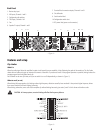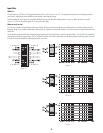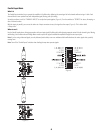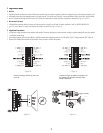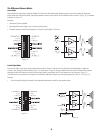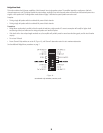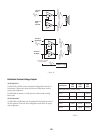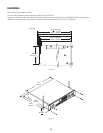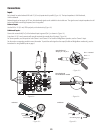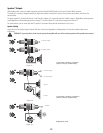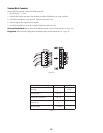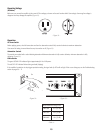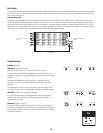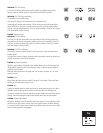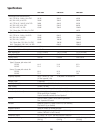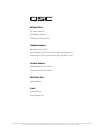
17
18
Indication: CLIP LED flashing
If the red CLIP indicator flashes when signal is applied, the amplifier output may be
shorted. Check the speaker wiring for stray strands or breaks in the insulation.
Indication: CLIP LEDs bright and steady
The amplifier is in protective muting.
One second of muting is normal when the amp is turned on or off.
Overheating will cause protective muting. The fan will be running at full speed and the
chassis will be hot to the touch; sound should resume within a minute as the amplifier
cools to a safe operating temperature. Check for proper ventilation. If the fan isn’t running
at all, the amplifier requires servicing.
Problem: Distorted Sound
Indication: CLIP LED flashing
If the red CLIP indicator flashes before the signal indicator does, the load impedance is
abnormally low or shorted. Unplug each speaker one-by-one at the amplifier. If the CLIP
LED goes out when you disconnect a cable, that cable or speaker is shorted. Try another
cable and speaker to locate the fault.
Indication: CLIP LED not flashing
This could be caused by a faulty speaker or loose connection. Check the wiring and try
another speaker.
The signal source may be clipping. Keep the amplifier attenuation controls at mid point so
that the source does not have to be overdriven.
Problem: No channel separation
Check the switch settings on the back of the amplifier. Make sure the “Parallel Input” and
“Bridge Mode” switches are OFF in dual-channel, bi-amp, or stereo use where different
signals go to each channel.
Make sure other equipment in the signal path, such as mixers, preamps, etc., are set for
stereo, not mono.
Problem: Hum
Move cabling and signal sources to identify “hot spots” in the system. Cables with faulty
shielding are a frequent entry point for hum.
Problem: Hiss
Unplug the amplifier input to confirm that the hiss is coming from the source or a device
upstream; erratic or popping noises indicate an electronic fault in the offending unit.
To keep the normal noise floor low, operate the primary signal source at full level, without
clipping, and avoid boosting the signal further between the source and the amplifier.
Problem: Squeals and feedback
Microphone feedback should be controlled with mixer controls. If noise continues to build
up with zero mic gain, there is a serious fault in the signal processors or cables. Working
in succession from the signal source towards the amplifier, check each device in the signal
path by reducing its gain or unplugging it.



